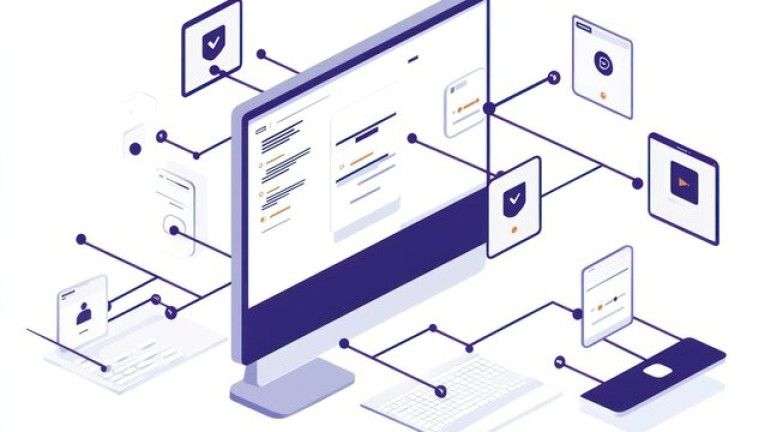When exploring the world of blockchain technology, the name Adara Blockchain has started to garner attention. This emerging platform offers a unique set of features and opportunities, positioning itself as an innovative force in the blockchain space. In this article, I will explore the Adara Blockchain in-depth, covering its functionality, key features, comparison to other blockchains, and practical use cases. My aim is to give you a clear, balanced view of what Adara Blockchain is, how it works, and where it fits into the larger blockchain ecosystem.
Table of Contents
What is Adara Blockchain?
At its core, Adara Blockchain is a decentralized, scalable blockchain designed for the creation of secure applications. It operates with the primary goal of improving upon the limitations of older blockchain networks, such as Ethereum and Bitcoin, by offering higher transaction speeds, lower fees, and improved scalability. Adara Blockchain achieves this by utilizing an innovative consensus algorithm and a modular approach to its architecture.
In simple terms, Adara Blockchain is built to handle complex transactions at a fast pace without sacrificing security or decentralization. This is crucial for its potential in industries like finance, healthcare, supply chain management, and more.
Key Features of Adara Blockchain
One of the most notable aspects of Adara Blockchain is its focus on key performance indicators that are often a challenge for other blockchain networks. These include transaction speed, cost, and scalability. Let’s break down these features:
1. Speed and Efficiency
Adara Blockchain boasts high transaction speeds. This is achieved through its unique consensus algorithm, which I’ll delve into later. Unlike Bitcoin or Ethereum, where transactions can take several minutes or even longer to be confirmed, Adara Blockchain is designed to process transactions in mere seconds.
This speed makes Adara Blockchain highly appealing for real-time applications. Think about applications like online gaming, digital payments, and decentralized finance (DeFi) platforms, all of which require rapid transaction validation.
2. Low Transaction Fees
Transaction fees have long been a concern on networks like Ethereum, where high network congestion can result in fees that are prohibitive for smaller transactions. With Adara Blockchain, the transaction fees are much lower. This can be attributed to the platform’s ability to handle a higher volume of transactions without overwhelming the network, thereby reducing the cost for each individual transaction.
3. Scalability
Adara Blockchain is designed with scalability in mind. It uses a modular architecture that allows for the network to scale horizontally, meaning that it can expand as more users and applications join the ecosystem. This is in contrast to older blockchains, where scalability has often been a bottleneck, resulting in slower transaction times and higher fees as the network grows.
4. Security and Decentralization
Like all blockchain networks, security is a top priority for Adara Blockchain. It employs robust encryption and cryptographic techniques to ensure that all transactions are secure and tamper-proof. The network is also decentralized, meaning no single entity or group controls it, which ensures transparency and reduces the risk of fraud.
5. Interoperability
Adara Blockchain is designed to be interoperable with other blockchain networks. This is crucial because it allows users and developers to integrate Adara with existing blockchain ecosystems, making it easier to transfer assets and data across different platforms. This is an important feature, especially as the blockchain space becomes more fragmented with the rise of specialized blockchains.
The Adara Consensus Algorithm
The consensus algorithm is one of the fundamental components of any blockchain. In traditional blockchain networks like Bitcoin, the consensus mechanism used is Proof of Work (PoW). While PoW is secure, it is often slow and energy-intensive. Ethereum, on the other hand, has been transitioning to Proof of Stake (PoS), which offers better efficiency and energy usage.
Adara Blockchain uses a novel consensus algorithm called Proof of Participation (PoP). This hybrid model combines the best aspects of PoW and PoS to create a system that is both secure and efficient.
Proof of Participation relies on the concept of staking and validating transactions in a manner that rewards users for participating in the network. Users can stake their tokens to help validate transactions, and in return, they receive rewards. The more tokens a user stakes, the greater their chance of being selected as a validator, which incentivizes users to hold and participate in the ecosystem.
This system reduces the energy consumption typically associated with PoW and the centralization risks found in PoS systems. By balancing the benefits of both models, PoP ensures the security of the network while keeping it scalable and efficient.
Adara Blockchain vs. Other Blockchain Platforms
Now that we’ve covered the core features of Adara Blockchain, it’s helpful to compare it to some of the other prominent blockchain platforms. This will give you a sense of where Adara fits within the broader ecosystem.
| Feature | Adara Blockchain | Ethereum | Bitcoin |
|---|---|---|---|
| Transaction Speed | Seconds | Minutes | Minutes to hours |
| Transaction Fees | Low | High (especially during congestion) | Low (but rising with network activity) |
| Scalability | Highly scalable (horizontal) | Limited (vertical scaling) | Limited |
| Consensus Mechanism | Proof of Participation (PoP) | Proof of Stake (PoS) | Proof of Work (PoW) |
| Energy Efficiency | High | Moderate (PoS) | Low |
| Security | High | High | High |
| Decentralization | High | High | High |
As we can see, Adara Blockchain offers significant advantages in transaction speed and scalability compared to Ethereum and Bitcoin. While Bitcoin is known for its security and decentralization, it suffers from high transaction times and fees, especially as the network becomes congested. Ethereum, while more scalable than Bitcoin, still struggles with fees and transaction delays, particularly during peak demand periods.
Adara Blockchain, with its Proof of Participation model, provides a unique balance of security, scalability, and low fees, making it a strong contender in the blockchain space.
Use Cases of Adara Blockchain
Adara Blockchain can be applied across various industries. Below, I’ll explore a few key use cases where Adara could make a significant impact.
1. Decentralized Finance (DeFi)
DeFi platforms rely on fast and cost-effective transactions to offer services such as lending, borrowing, and asset trading. With Adara Blockchain’s low transaction fees and high-speed processing, it becomes an ideal platform for DeFi applications. Developers can build smart contracts and decentralized exchanges that work efficiently without the high costs seen on Ethereum.
2. Supply Chain Management
One of the most promising applications for Adara Blockchain is in supply chain management. Blockchain technology allows for transparent tracking of goods as they move through the supply chain. By using Adara Blockchain, companies can ensure that their products are traceable, reducing fraud and increasing accountability.
3. Healthcare
In the healthcare industry, secure and efficient data sharing is vital. Adara Blockchain could be used to store patient records securely and enable quick, authorized access to those records by healthcare professionals. This would not only protect patient privacy but also streamline the process of accessing critical health data.
4. Gaming and NFTs
Adara Blockchain’s high transaction speed and low fees make it well-suited for gaming and NFT platforms. With the rise of NFTs (Non-Fungible Tokens), games and digital art creators need a blockchain that can handle high-volume transactions without breaking the bank. Adara’s efficiency allows for smooth in-game transactions, making it an attractive choice for developers.
Conclusion
Adara Blockchain is an exciting development in the blockchain space. By offering faster transaction speeds, lower fees, and improved scalability, it presents a compelling alternative to older blockchain networks like Bitcoin and Ethereum. Its unique consensus mechanism, Proof of Participation, combines the best of Proof of Work and Proof of Stake, ensuring a secure yet energy-efficient network.
From decentralized finance to supply chain management, the potential applications of Adara Blockchain are vast. Whether you’re a developer, investor, or simply someone interested in blockchain technology, Adara Blockchain is certainly worth keeping an eye on as it continues to evolve.
I believe that Adara Blockchain’s combination of efficiency, scalability, and security makes it one of the most promising blockchain platforms for the future. As the blockchain ecosystem grows, platforms like Adara will play a crucial role in shaping the next generation of decentralized applications.





